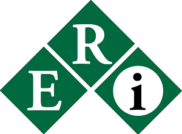
Whether you’re a recent MLIS graduate or an experienced practitioner, librarian salaries can play a major role in what jobs you take and how appreciated you feel – not to mention the whole paying-your-rent/mortgage issue.
True, salary isn’t always (or even often) the most important aspect of a job, but it does help to know what your options are, and if your earnings expectations are realistic or not.
How to determine librarian salary potential
Figuring out library salary ranges involves three steps:
- Identify potential sources of credible and current salary information.
- Figure out what job titles those sources are likely to use for the position you’re interested in, and whether what they’re calling, for instance, “data management” is actually what you’d call “records management”.
- Assess the professional attributes you have and lack that will influence which end of the salary range you’ll likely fall within.
Find credible librarian salary information
SALARY AND PAY SCALE WEBSITE
Several starting points for developing realistic salary information can be found online, including sites that focus on compensation information:
In addition, company review site Glassdoor.com has recently started providing salary information as a separately searchable category.
The benefit of these sites is that their information is usually drawn from actual jobs, so the information is both realistic and current. The downside is that because the salaries are based on actual jobs, sometimes the site may only have one of a specific job, which can make the salary information wildly unreliable.
Government salary resources
A second source is the highly reliable Bureau of Labor Statistics’ Occupational Outlook Handbook (OOH), which aggregates information from throughout the entire United States. The information is detailed and comprehensive, but the OOH salary numbers rarely are sufficiently specific to cover, for example, the differences among starting reference librarians, an experienced branch manager, and the head of tech services. It does have separate categories for “library assistants and technicians” and “archivists, curators, museum technicians, and conservators” that can be used to refine your search.
Annual library salary surveys
Annual surveys done by publications or professional associations are a third source.
One of the best resources here is Library Journal’s annual Placements & Salaries report. Based on information supplied by the LIS graduate programs and their recent grads, the annual overview provides multiple categories within which to understand salary information for the profession, for example by region, school, primary job assignment (this is especially valuable), and gender.
Evaluate LIS job descriptions and roles
One of the great things about the Library Journal Placements & Salaries report is that when it identifies LIS jobs, you can be fairly confident that when it says “Adult Services” or “Circulation” or “Data Analytics,” those terms mean what you would expect them to mean within the LIS profession.
On the other hand, with non-LIS salary sites, “medical information specialist” could be a medical librarian role or a data-entry position. Consequently, it’s important to read the job descriptions that accompany the salary data, and also try various iterations of job titles to make sure you’ve found relevant information. Also, many of the non-LIS (but applicable) jobs may have alternative titles, so be sure to try a number of related job descriptors to see if you can find a relevant salary comp.
Other library / information service compensation variables
Any salary information you find should be assessed relative to a number of other variables that influence compensation:
- The geographic region of the employer – generally, U.S. salaries range from high to low as follows: Pacific (highest), Northeast, Midwest, Mountain, Southeast, and South Central (lowest).
- The cost of living in that geographic region, and more specifically within a metropolitan area. A salary that seems high may not be so attractive when you confront the high cost-of-living reality in places like San Francisco, Los Angeles or New York.
- Your level of expertise and/or years of experience, keeping in mind that “entry level” salaries may apply to at least your first two years of professional work.
- Additional specialized skills you may have, remembering that value is driven by the skills that are in high demand.
- The size and financial stability of the organization posting the job.
- Whether the potential employer is a nonprofit, for-profit, or library organization – for-profits generally pay higher salaries, especially for data or technology-based skills.
As you look at salary ranges for specific roles or types of work, consider how each of these factors will influence your earning capacity toward the higher or lower end of those ranges.
Points out Brad Rogers, LibGig’s Director of Recruiting,
“Understanding the unique strengths you bring to a specific job helps you understand and articulate why you merit that higher-end salary, while also convincing a potential employer how valuable you’d be for them.”
Representative librarian salary ranges based on LIS duties
Once you’ve identified your variables, look at the following salaries (drawn from the sources noted in this article) to get a general sense of what a representative group of LIS jobs are paying in 2017:

- “Placements & Salaries 2016,” Library Journal, October 17, 2016
- Salary.com, accessed May 20, 2016
- SalaryExpert.com, accessed May 20, 2016
- Payscale.com, accessed May 20, 2016
As you can see, even if your starting salary is at the lower end of the range, there’s usually plenty of room for growth (and raises) as you increase your expertise and professional value.
And as these numbers also show, technology skills will almost always pay off for you.





